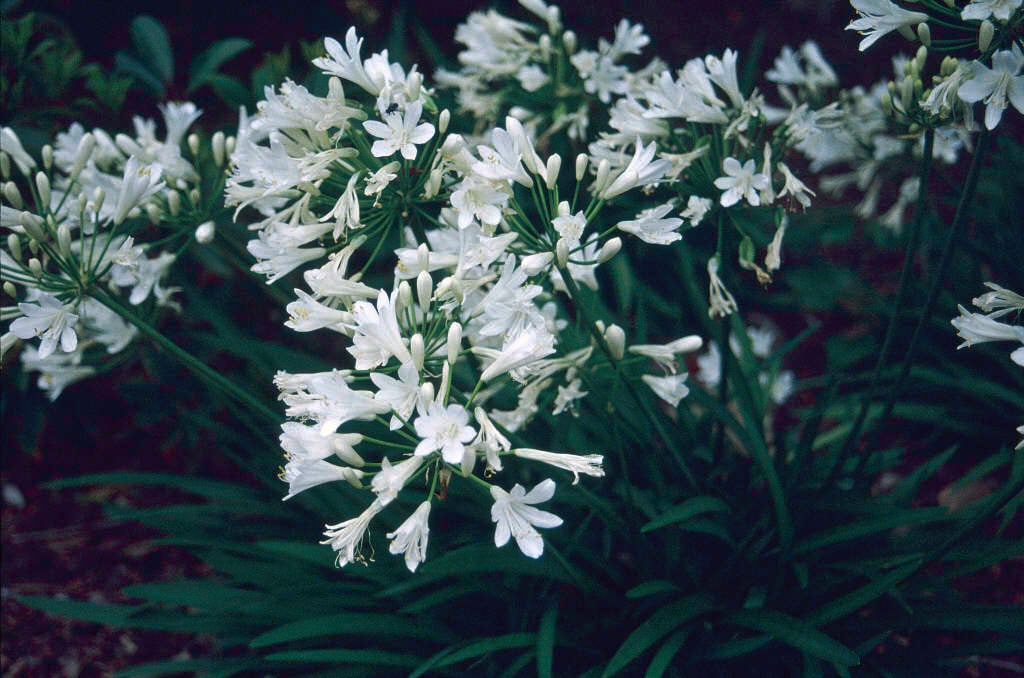Agapanthus africanus 'Albus'
white African lily
Plants grown as Agapanthus africanus 'Albus' are evergreen perennial with narrow, erect leaves and long-stemmed umbels of white, trumpet-shaped flowers in late summer

Buy this plant
Size
Ultimate height
0.5–1 metresTime to ultimate height
2–5 yearsUltimate spread
0.1–0.5 metresGrowing conditions
Moisture
Moist but well–drainedpH
Acid, Alkaline, NeutralColour & scent
| Stem | Flower | Foliage | Fruit | |
| Spring | Green | |||
|---|---|---|---|---|
| Summer | White | Green | ||
| Autumn | Green | |||
| Winter | Green |
Position
- Full sun
Aspect
South–facing or West–facing or East–facing
Exposure
Sheltered Hardiness
H3Botanical details
- Family
- Amaryllidaceae
- Native to GB / Ireland
- No
- Foliage
- Evergreen
- Habit
- Clump forming
- Potentially harmful
- Humans/Pets (dogs, cats): harmful if eaten. Wear gloves and other protective equipment when handling. For further information and contact numbers regarding pets, see the HTA guide to potentially harmful plants
- Genus
Agapanthus are clump-forming perennials with narrowly strap-shaped leaves, evergreen in some species, and erect stems bearing umbels of funnel-shaped blue or white flowers
- Name status
Unresolved
How to grow
Cultivation
Grow in a container of moist but well-drained compost and position in full sun. Water during the growing season and liquid feed monthly from spring to flowering. Over the winter, bring container under cover. See agapanthus cultivation for further information.
Propagation
Propagate by division every 3 to 4 years in spring
Suggested planting locations and garden types
- Coastal
- Gravel garden
- Patio and container plants
- Mediterranean climate plants
- Architectural
- Flower borders and beds
- Cut flowers
Pruning
No need to cut down in the autumn, as the seedheads look attractive over winter
Pests
May be susceptible to slugs and snails and agapanthus gall midge
Diseases
May be susceptible to a virus
Love gardening
Sign up to receive regular gardening tips, inspiration, offers and more
View our Privacy Policy
Get involved
The Royal Horticultural Society is the UK’s leading gardening charity. We aim to enrich everyone’s life through plants, and make the UK a greener and more beautiful place.